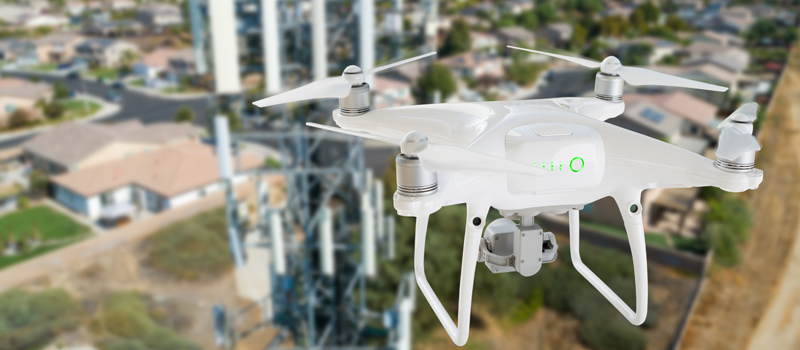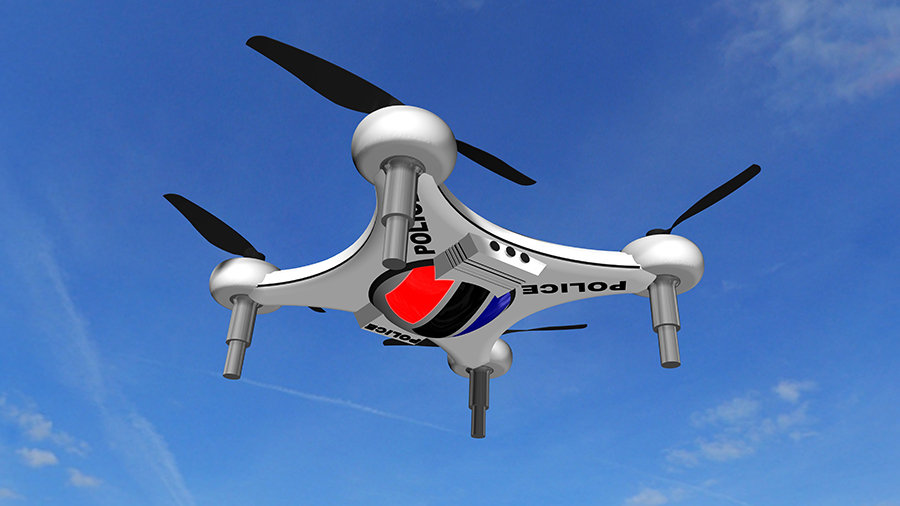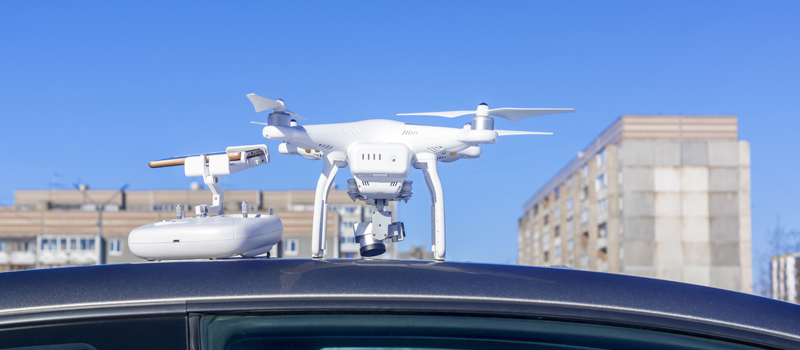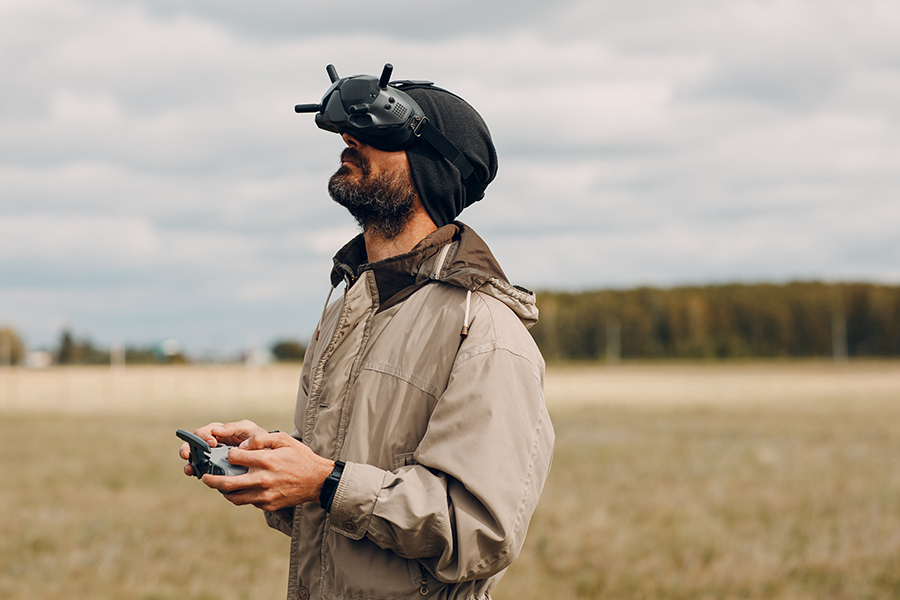-
Applications of drone tower inspection
- Routine inspection
- Pre-work inspection
- Damage assessment
- Hazard analysis
-
Why use a drone?
- Faster
- Safer
- Better data
-
Hardware considerations for drone tower inspection
- Flight stability
- Obstacle avoidance
- Swappable payload
- Battery life
- Reliable transmission technology
-
Software recommendations
- Pix4D
- DroneDeploy
- Skyward
- Aloft
-
Hazards and challenges
- Electromagnetic interference
- Poor visibility
- Guy lines
- Strong winds
- Airspace restrictions
-
Final thoughts
As drone technology becomes more sophisticated, they are also being depended on for more critical tasks. A very good example of this is the use of drones to do routine or emergency inspections of communications, transmission, or cell towers.
From the perspective of a professional drone pilot, doing tower inspections is probably one of the most profitable services that you can offer. However, tower inspection is a technically demanding field that is not to be taken lightly. What does the market for tower inspection look like? What does a drone pilot need to be able to offer this type of service?
Applications of drone tower inspection
As you can tell by now, going into drone-based tower inspection will require significant investment in terms of hardware, software, and skill development. The question is then whether there is enough of a market out there to justify into tower inspection. To give you an idea of the opportunities in this field, here are some of the most common use cases for drone-based tower inspection:
Routine inspection
Communications or transmission towers are considered critical infrastructure. Companies rely on them for routine operations, and even our daily activities are entirely dependent on these towers working properly. As such, regular inspection is an essential part of tower maintenance.
Drones can be used for regular tower inspection instead of having to send teams of actual personnel up the tower. It’s safer, faster, and probably cheaper in the long run. With drones, regular inspections can be done at a higher frequency, making tower operations more reliable.
Pre-work inspection
Inevitably, repair works need to be done on sections of a tower that has been damaged either by extreme weather or just regular wear and tear. This is a dangerous and logistically complex task.
Drones can be used for detailed documentation of repair sites prior to the repair team moving in. With the data or images collected by the drone, repair teams can be better informed about the tools that they will or the amount of work that needs to be done. Every bit of preparation helps for a task as monumental as making repairs on a tower.
Damage assessment
Large towers are particularly prone to get damaged in case of an extreme weather event. When this happens, the tower needs to be assessed quickly. This can have repercussions on how the tower can continue to function or if repair teams need to be mobilized. An initial assessment can also help determine the ideal approach path for the repair team, should some sections of the tower be damaged.
Hazard analysis
There is a lot of potential hazards involved whenever a tower is being operated, maintained, or repaired. Having a drone on site is akin to having eyes on the sky so that such hazards can be closely monitored. Even something as mundane as birds building nests on the tower may require intervention by the tower operator.
The beauty of using drones for hazard assessment is that it can be done without having to expose people to unnecessary risk.
As for potential clients, you will likely have to look for cellphone service providers, utility companies, or federal agencies concerned with telecommunications. There isn’t a large client base, so you will have to differentiate yourself based on experience and capabilities.
Why use a drone?
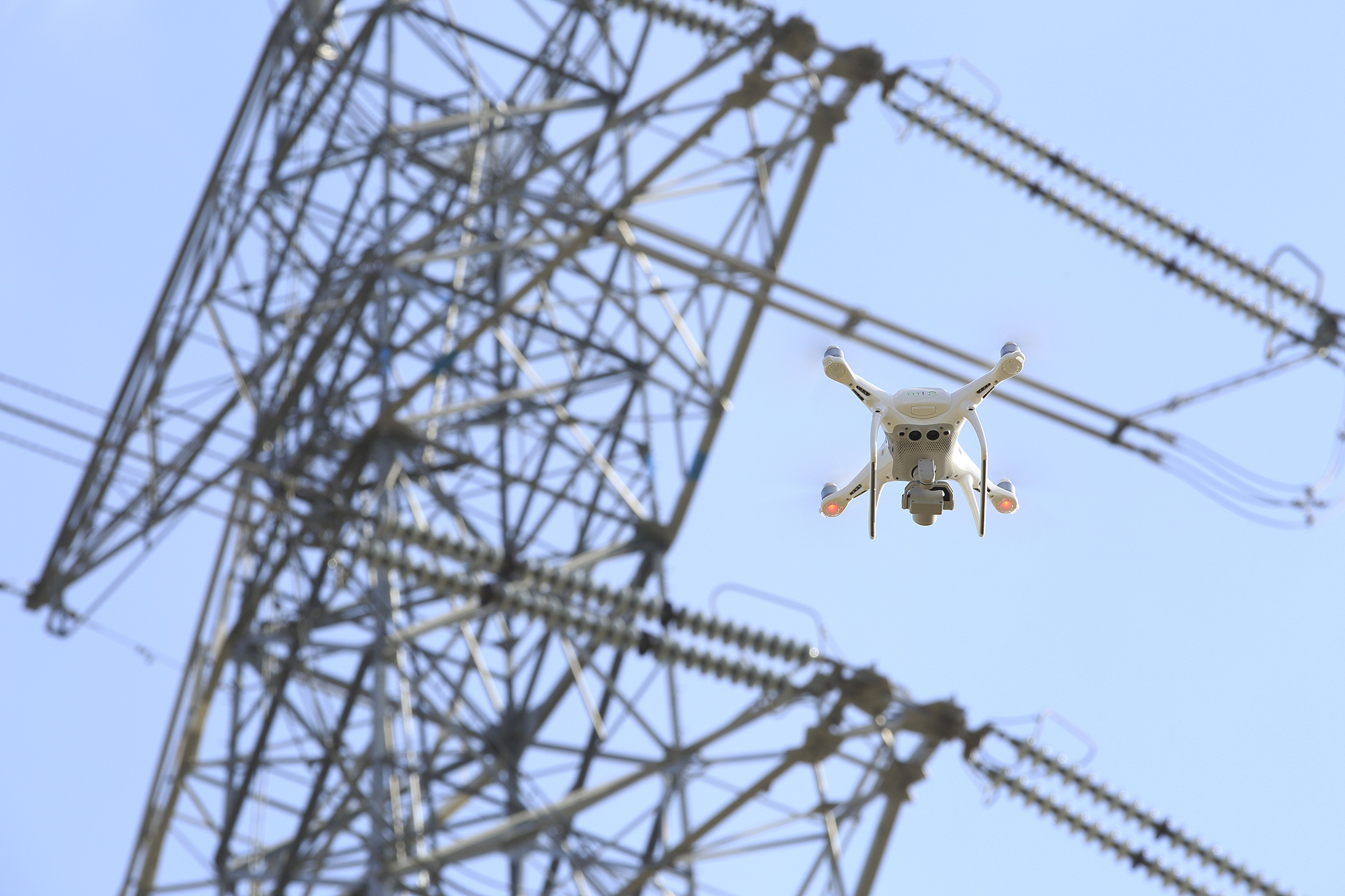
If you’re a drone pilot, then the benefits of using drones for inspecting towers are probably already obvious to you. However, your potential clients may not be as enlightened. Here are some talking points you can bring up should you need to convince someone that using a drone is a good idea.
Faster
In terms of speed of deployment, there really is nothing quite like a drone. If there are no airspace issues, you can have a drone up and fly in just a few minutes. Even if there the area of operations was within controlled airspace, requesting airspace authorizations nowadays is a near-instant process.
Accessing any spot in the tower using a drone is certainly much faster than having to deploy inspection teams to climb the tower. Even if a company had access to a helicopter for aerial reconnaissance, using a drone is still faster and a lot cheaper.
Safer
A distinct characteristic of using a drone is that it does not require sending a person to high altitudes. Precious data can be collected with everyone is safely on the ground. Of course, drones cannot do repairs – people will still have to climb the tower for that. However, companies will certainly benefit from having an alternative to sending their personnel to potentially hazardous situations.
Better data
Drones are now a lot more advanced than they used to be. Aside from high-resolution cameras, drones can be outfitted with thermal cameras, LiDAR sensors, and multispectral sensors. The data collected by drones can also be used to generate highly detailed 3D models.
The result is that sections of a tower can be recreated as 3D models that can be rotated, measured, and scrutinized endlessly. It is almost as good as inspection teams physically being there at the tower minus the risk of being at high altitudes. The quality of data that can be collected by a drone is arguably better than what an on-site team can collect.
All things considered, there is virtually no downside to a tower operator employing a drone to aid in inspection. As long as the drone pilot is skilled and that the price is reasonable, it should be very easy to make a case that drone inspection offers huge benefits.
Hardware considerations for drone tower inspection
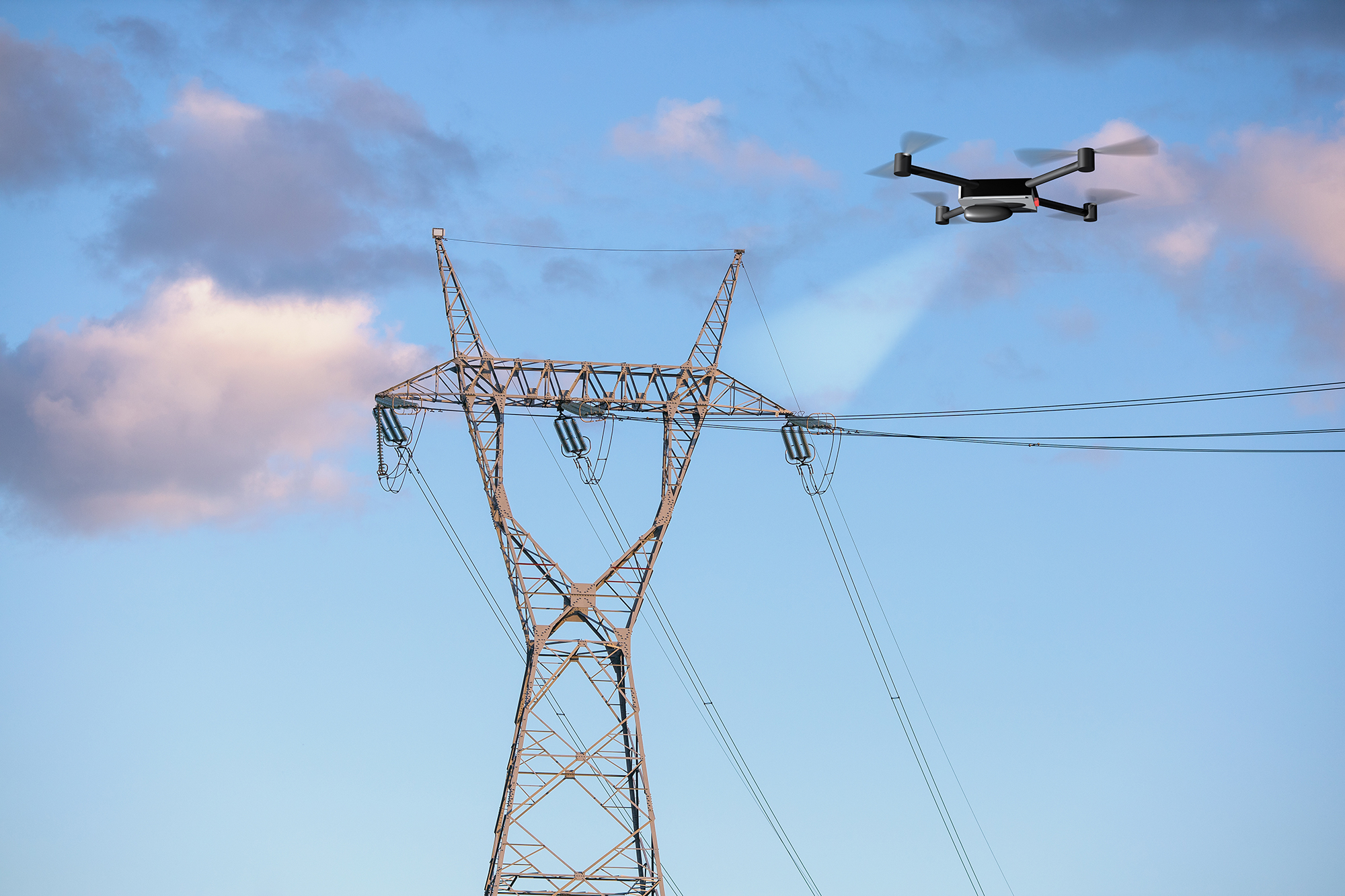
Drone inspection is a high-level service that requires advanced hardware and drone flight skills. Keep in mind that you will be flying near a large structure and probably at very high altitudes. You will also need the equipment required to gather the data as requested by the client. Here are a few factors to consider when assembling your equipment loadout:
Flight stability
When you’re flying near a structure as large as a tower, there is practically no room for error. Keep in mind that towers can be a lot higher than the usual 400-feet ceiling for drones.
When you’re flying at 1000 feet, a crash can absolutely decimate your drone. Even worse, your drone can cause further damage to the tower if you’re not very careful.
With these in mind, you will want your drone to be as stable as possible. GPS-aided stabilization is one thing, but you also need the drone to be powerful enough to withstand the strong winds that you can expect at higher altitudes.
Obstacle avoidance
One of the reasons for maintaining visual contact with the drone is so that you can maneuver it to avoid any potential obstacles. This is the ideal scenario, but it’s a lot better if you have a backup system in place in the form of an automatic obstacle avoidance system.
Many modern drones are equipped with sensors that can detect potential obstacles in their flight path. When such a sensor is triggered, the drone will either stop moving or calculate a safer alternative route. This can be a lifesaver for operations as sensitive as tower inspection.
Swappable payload
A hallmark of a high-end professional drone is that it’s not restricted to a single payload type. This means that just a single drone can be used to take photos, do thermal surveys, or scan a tower to generate a 3D model. If you intend to offer services for drone tower inspection, this level of versatility would certainly help you stand out from other drone pilots.
The biggest downside of aspiring this feature is that it’s typically only found in very expensive drones. Aside from the drone itself, you would also have to buy the payload equipment separately. This can add up quickly and is probably one of the biggest hurdles you will need to face if you want to go into tower inspection.
Battery life
Battery life is particularly important in tower inspection because of the sheer scale of the job. Some transmission towers can be higher than 1000 feet, which means your drone will probably need to spend about two to three minutes just gaining altitude. This significantly cuts down on the length of time that you have to gather useful data.
To make each flight worthwhile, we recommend going with a drone that has at least 30 minutes of battery life. Even then, you may still have to do multiple flights to gather the data needed by the client.
Reliable transmission technology
There are several elements in a tower inspection job that can disrupt communication between your drone and the ground station. There is a large separation distance, electromagnetic interference from the tower, and the tower itself acting as a physical barrier. Make sure that your drone is equipped with transmission technology that is designed to withstand such a challenging environment.
As already implied, drones that are appropriate for tower inspection are usually high-end and a bit on the expensive side. This can make the field a bit difficult to enter, especially for drone pilots who are relatively new.
Software recommendations
At the surface, a drone tower inspection may seem as simple as flying a drone near the tower while collecting images and other data. However, the job does not end when the flight operations are done. Once the data has been collected, it has to be processed and interpreted to generate any useful information.
Your choice of software both for flight management and data processing goes a long way towards ensuring how effective or efficient your workflow will be. Here are some of the best options:
Pix4D
Pix4D is not just a piece of software – it is an entire ecosystem of software modules that can be used for a variety of photography, mapping, and modeling applications. For tower inspection, either or both of the Pix4DScan and Pix4DInspect modules can be used for the job. You can also use the Pix4D platform for flight planning and management.
As one of the most well-established brands in this field, it’s tough to go wrong with Pix4D. The advantage of working within a single software ecosystem is that you are not likely to run into any data compatibility issues.
Pix4D offers subscription pricing for its products. You may choose to sign to a bundle of the modules or just the modules that you specifically need. Expect to spend at least $500 per month for a package that is suitable for tower inspection.
Considering the high subscription price and the fact that Pix4D isn’t exactly beginner-friendly, this is software that we can recommend only for the more experienced users with established clientele. The tools, workflow, and results are great, but we don’t expect it to do well with relative beginners.
DroneDeploy
Like Pix4D, DroneDeploy is a software platform specifically designed for processing drone data. It’s an all-around software solution for industries such as construction, agriculture, oil and gas, and inspection among many others.
DroneDeploy also offers an end-to-end workflow that can handle flight planning, execution, data management, and data processing. The platform uses a cloud server for data processing, allowing for faster turnaround despite any hardware limitations on the user’s side.
Unlike Pix4D, DroneDeploy is just a single software module that offers all the functionalities. The subscriptions are also a bit more flexible, with the most basic option available for only $99 per month. This makes DroneDeploy a more practical option for drone pilots who would like to venture into tower inspection without having to spend too much on software right away.
Skyward
Skyward is one of the more well-known names in the field of drone flight management software. The workflow of Skyward is impressively comprehensive. Through Skyward, you can check for airspace restrictions, request airspace authorization, do a risk assessment, fly your drone automatically or manually, and review and document operational data.
A huge advantage of Skyward is that it now offers data processing for 2D mapping and 3D modeling. This uses a photogrammetry technique powered by Pix4D technology. The feature is quite basic compared to what actual drone processing software can do, but it will be just fine for simple inspection jobs. Skyward is a lot cheaper than Pix4D, though, so the loss of a few mapping features isn’t that much of a downgrade.
Aloft
If you’re planning to operate drones at an enterprise scale, then drone management software like Aloft will become necessary. Aloft provides an all-around platform for drone fleet management, flight planning, and data management. The mobile app also supports live streaming of the video feed from a drone, should such a feature be needed by your clients.
Aloft does not have any data processing capabilities, so the cost of having to buy a separate software is something you may want to consider. However, Aloft is considered best-in-class when it comes to drone fleet management and flight planning.
Tower inspection is a type of drones service where you may end up having to deal with too many different variables simultaneously. This is where good software comes in – it automates many of the steps in the process so you won’t have to deal with them actively.
Hazards and challenges
We have already mentioned a few times in the previous sections that tower inspection is a considerably risky operation for drone pilots. You may not be dealing with confined spaces or other aircraft in the vicinity, but you will be flying at high altitudes and near a large tower that may be actively receiving or transmitting radio signals.
All these combine to create an environment that only skilled drone pilots should be flying in. Still, part of the battle is preparation. Here are the major challenges you should anticipate should you go into tower inspection.
Electromagnetic interference
Regardless of the type of tower, you will be inspecting, there is a good chance that its surroundings will be dense with electromagnetic signals. This can interfere with your drone’s transmission system, possibly resulting in loss of control or the FPV video feed.
Modern drones generally come with some degree of protection against electromagnetic interference. However, the best preventative measure is to simply maintain a safe distance between the drone and the tower. 100 feet is considered a safe distance, although you can very slowly approach up to about 50 feet.
Poor visibility
Maintaining visual contact is still a requirement during tower inspection, even if most of it is done by the drone automatically. This can be difficult considering the scale of the operations – it is not uncommon to inspect towers that are more than 1000 feet high.
To make sure that visibility is not compromised, make sure to check the weather prior to operations to avoid foggy or hazy conditions. Clear conditions are also best for capturing good data for 3D modeling.
The tower itself can also obscure visibility, especially for large towers with many opaque sections. A remedy to this is for the pilot to move along with the drone, or to plan the inspection so that only one section is done at a time.
In any circumstance, it does not hurt to have a dedicated visual observer in your crew. The sole duty of this person would be to maintain visual contact with the drone. It also massively helps to have a second set of eyes scanning the immediate surroundings of the drone to check for possible obstacles.
It must be noted, however, that the remote pilot-in-command must still maintain visual contact with the drone even in the presence of a visual observer.
Guy lines
Many towers are built with guy lines. These are wires that are connected to the tower and the ground to help keep the tower stable. Guy lines can be dangerous because they are hard to see and might not even be visible to a drone’s obstacle avoidance system.
It will take some smart flying tactics to make sure that your drone does not run into guy lines. A good strategy is to locate where the guy lines are anchored to the ground and to only fly the drone vertically from that point.
Strong winds
Strong wind is one other thing you need to anticipate, especially if your drone will be climbing to altitudes above 1000 feet. It can be very hard to predict how strong the wind is up there based on ground conditions.
Again, checking weather reports before the actual operations can be a great help in avoiding this difficult situation. Be careful on the initial ascent of the drone and watch out for signs of the drone struggling to maintain a stable flight path. If winds seem too strong, it’s better to just pull out and wait for them to subside.
Airspace restrictions
Running into manned aircraft is actually less of a worry in tower inspection compared to other drone applications. This is because drones are allowed to go beyond the 400-foot altitude limit as long as they are flying within 400 feet of a structure.
However, this does not mean that you can disregard the rules on drone flight in controlled or restricted airspace. If your area of operations is within controlled airspace, then you must still secure airspace authorization even if you’re flying within the vicinity of a structure. This helps in avoiding conflict with other aircraft and is an essential element of unmanned traffic management.
Final thoughts
Inspecting towers can be one of the most lucrative avenues for a professional drone pilot. The market may not be that big, but the value that drones offer in such a scenario is immense. Drones make tower inspection jobs faster, safer, and more cost-efficient.
Tower inspection jobs are not to be taken lightly. There is a reason that most professionals who do this use high-end drones – doing a tower inspection can be quite demanding in terms of hardware and software. It’s a lofty (and expensive) goal, but one that is worth aspiring for.
